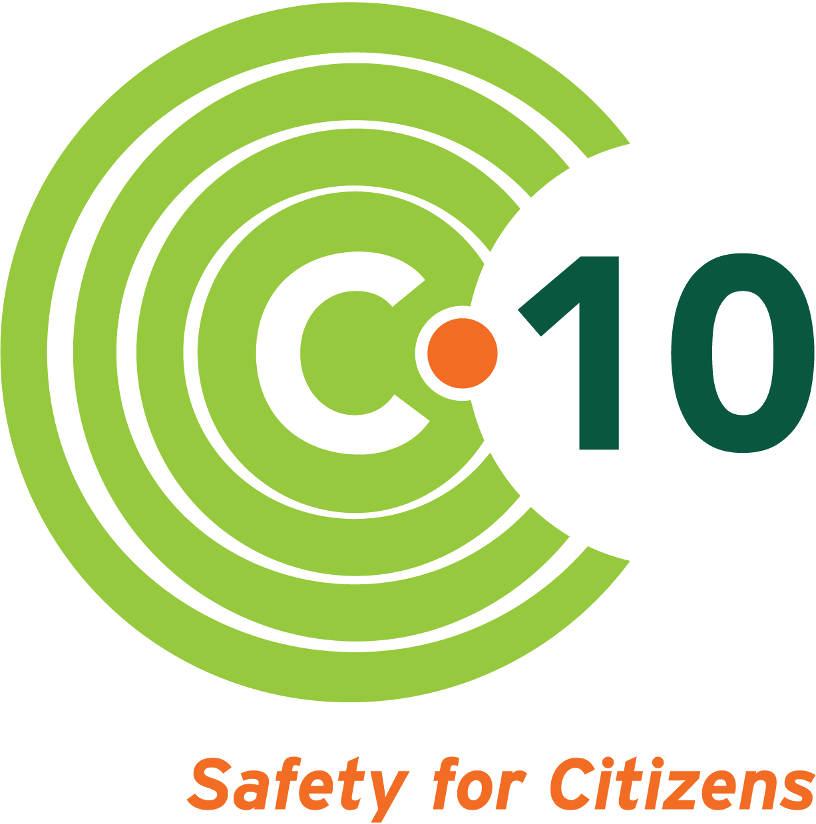C-10's Challenge to Seabrook's Concrete Monitoring
C-10 Brings Legal Challenge to Seabrook's Concrete Testing and Monitoring
4-page Overview of C-10's Case
C-10 has been following the case of degraded concrete at the nuclear plant since 2009. Without our group's intervening, concerns about what we see as inadequate testing, monitoring and analysis of the nuclear plant's degraded concrete may never have seen the light of day.
What is the issue?
Seabrook Station nuclear power plant in coastal New Hampshire, which was recently relicensed to operate until 2050, faces an array of safety concerns related to the degraded concrete in key structures. Seabrook is the first U.S. plant known to be suffering from alkali-silica reaction or “ASR,” but experts believe it may well appear at other reactors. This puts in question the plant’s ability to operate safely in the future, and may place the public at greater risk of radiological exposure should Seabrook experience an accident, earthquake, or other emergency event. C-10 's decade-long efforts have resulted in stronger federal oversight of the problem of ASR at Seabrook.
What has C-10 done to address this challenge?
We made our case at an evidentiary hearing of the Atomic Safety and Licensing Board (ASLB) the week of September 23, 2019 at Newburyport City Hall, Newburyport, Mass.. This regulatory proceeding that resulted in changes to Seabrook's operating license requirements to include more robust testing and monitoring of the plant's degraded concrete. We were very fortunate to have as our expert, Dr. Victor Saouma
and our attorney, Diane Curran. Read about the September 2020 ruling here.
So what is C-10’s goal?
Our goal is to ensure that the NRC holds plant owner NextEra Energy Seabrook to the highest standards of safety. We believe the public deserves to feel secure that the concrete will not fail in the event of a seismic event, triggering a radiological release.
Stronger concrete oversight ordered
The Atomic Safety and Licensing Board issued a public version of its ruling
on September 10. C-10's work for stronger testing and monitoring goes on; we asked for supplemental testimony by Dr. Saouma to be considered, including specific suggestions for how to ensure that conditions placed on NextEra serve their intended purpose of enhancing public safety. While that motion was denied legal grounds, the conditions ordered by the ASLB are effective immediately.
What’s the impact of this work?
The NRC has compelled NextEra to go “back to the drawing board” with its concrete testing and monitoring protocols, issuing revisions to the plant's operating license. This case has also created a new national precedent for concrete testing and monitoring for nuclear power plants.
What's next?
Our work is not done, and there is no cure for ASR. This case shows the importance of rigorous government oversight as well as independent watchdogs. C-10 will continue our work to:
- Ensure that plant owner NextEra Energy complies with the more stringent license conditions for monitoring Seabrook’s degraded concrete, and that safety reports are reviewed by independent experts to monitor the progression of this incurable condition.
- Call for fleet-wide concrete core sampling to assess the integrity of the concrete intended to contain harmful radiation at the nation’s 56 other nuclear plants; and,
- Advocate for the development of NRC regulations governing the management of the problem if (when) it is detected at other locations.
What does C-10's expert think?
Dr. Saouma, one of the world’s leading experts on ASR, approached C-10 when he learned of our case. He felt strongly enough about the importance of this case that, incredibly, he offered his services pro bono. While Dr. Saouma concedes that there is no "Band Aid" remedy to ASR, his tireless efforts contributed to marked improvements in how NextEra will monitor the problems with Seabrook's concrete.
Read our summary of the ruling, "Siding with Safety." You can also view ASR & Seabrook: 20 Questions and Answers, the slides Dr. Saouma presented in June 2019, or
watch a video of his talk at C-10's annual public meeting.
Visit C-10's blog
for more details on the regulatory proceeding relative to Seabrook's degraded concrete. For all media coverage,
click here. Download a timeline of key events with links to documents at button below.
C-10 Research & Education Foundation, Inc.
11 Chestnut Street
Amesbury, MA 01913
Phone: (978) 465-6646
Email: info@c-10.org
© C-10 Research and Education Foundation 2025 C-10 is a registered 501(c)(3) nonprofit. Tax ID/EIN #22-3117209.

